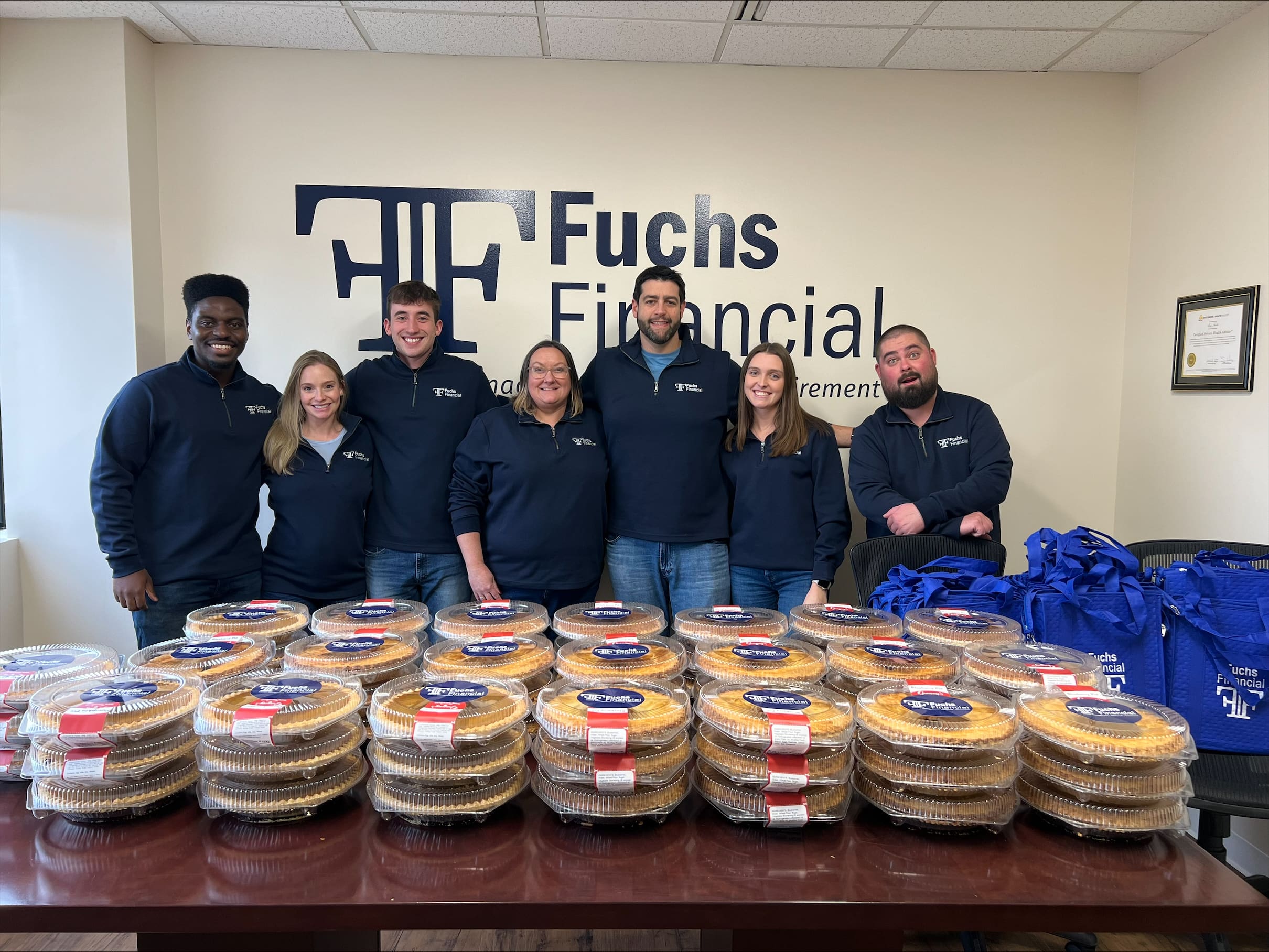Introduction
Individuals are increasingly seeking ways to make a lasting impact while also ensuring financial security for themselves and their families. Charitable Remainder Unitrusts (CRUTs) have emerged as a powerful tool for achieving these dual objectives. This guide aims to provide a clear understanding of CRUTs, including what they are, how they work, their pros and cons, and key considerations for potential donors.
What is a Charitable Remainder Unitrust (CRUT)?
Definition and Purpose
A Charitable Remainder Unitrust (CRUT) is a strategic giving vehicle that allows individuals to donate assets while retaining an income stream for themselves or other beneficiaries. By establishing a CRUT, donors can contribute cash, stocks, real estate, or other valuable assets to an irrevocable trust. The trust then pays out a percentage of its value annually to the income beneficiaries, with the remainder going to the chosen charitable organization(s) upon termination.
CRUTs are designed to provide individuals with a means to support charitable causes while also enjoying tax benefits and potential income during their lifetimes or a specified term. This structure allows donors to align their financial goals with their aspirations, making CRUTs an attractive option for those seeking to leave a lasting legacy.
Tax Benefits and Incentives
One of the key advantages of establishing a CRUT is the potential for significant tax benefits. By donating assets to a qualified charitable organization through a CRUT, donors can receive an immediate income tax deduction based on the present value of the charitable remainder interest. This deduction can help reduce taxable income and potentially lower overall tax liabilities.
Furthermore, CRUTs offer tax deferral benefits. Donors are not required to pay capital gains taxes on the sale of appreciated assets contributed to the trust. Instead, the trust can sell the assets tax-free, allowing for reinvestment and potential growth without the burden of immediate tax obligations.
It’s important to consult with tax or financial professionals to fully understand the specific tax benefits and implications of establishing a CRUT based on individual circumstances.
How Does a CRUT Work?
Asset Choice and Contribution
To establish a CRUT, donors transfer assets of their choosing to an irrevocable trust. These assets can include cash, stocks, real estate, or other valuable property. It’s crucial to select assets that have appreciated significantly in value to maximize the potential benefits of a CRUT.
Beneficiaries and Distributions
Donors have the flexibility to choose the income beneficiaries of the CRUT. These beneficiaries can include the donor, family members, or other individuals. The trust must distribute a fixed percentage of its assets annually to the income beneficiaries. The percentage is determined when the trust is established and can range from 5% to 50% of the trust’s fair market value.
The income distributions can be scheduled according to the donor’s preferences, such as monthly, quarterly, semi-annually, or annually. The amount distributed to the income beneficiaries may fluctuate each year based on the trust’s performance and asset valuation.
Charitable Remainder Beneficiary
Upon termination of the CRUT, the remaining assets of the trust are transferred to the chosen charitable organization(s) as the charitable remainder beneficiary. Donors have the freedom to select one or multiple charitable beneficiaries. It’s essential to ensure that the chosen organization(s) qualify as tax-exempt under the Internal Revenue Code.
The charitable remainder interest must be at least 10% of the initial net fair market value of all property placed in the trust. This requirement ensures that a substantial portion of the trust’s assets ultimately benefits charitable causes.
Types of Charitable Remainder Unitrusts (CRUTs)
Standard CRUT
A Standard Charitable Remainder Unitrust distributes a fixed percentage of the trust’s assets each year to the income beneficiaries. The percentage remains constant throughout the trust’s duration, regardless of changes in the trust’s value. This type of CRUT offers predictability and consistency in income distributions.
Net Income with Makeup Charitable Remainder Unitrust (NIMCRUT)
A Net Income with Makeup Charitable Remainder Unitrust (NIMCRUT) calculates income distributions based on the trust’s net income for the year. If the trust’s net income is lower than the specified distribution amount, the shortfall can be made up in subsequent years when the trust’s net income exceeds the distribution amount. NIMCRUTs provide flexibility in income distributions, particularly during years of lower trust income.
Flip CRUT
A Flip Charitable Remainder Unitrust begins as a Net Income with Makeup CRUT and “flips” to a Standard CRUT at a predetermined triggering event. The triggering event can be the sale of a non-marketable asset or the occurrence of a specific date. Flip CRUTs offer a balance between income flexibility and predictable distributions, making them suitable for individuals who anticipate changes in their financial circumstances.
Pros and Cons of Charitable Remainder Unitrusts
Pros
- Financial Flexibility: CRUTs provide a regular income stream for donors and income beneficiaries, offering financial security and support for living expenses.
- Tax Benefits: Donors receive an immediate income tax deduction based on the present value of the charitable remainder interest. Additionally, capital gains taxes on appreciated assets contributed to the trust are deferred or eliminated.
- Philanthropic Impact: CRUTs allow individuals to support charitable causes close to their hearts, leaving a legacy and making a positive difference in society.
- Asset Diversification: By contributing appreciated assets to a CRUT, donors can diversify their investment portfolios, potentially increasing overall returns.
- Estate Planning: CRUTs can be integrated into comprehensive estate planning strategies, providing for loved ones while supporting charitable organizations.
Cons
- Irrevocability: Once established, CRUTs are irrevocable, meaning they cannot be altered or revoked. Donors must carefully consider their long-term financial goals and commitment to philanthropy before establishing a CRUT.
- Liquidity Constraints: Depending on the assets contributed to the trust, accessing immediate liquidity may be challenging. Donors should ensure they have sufficient liquid assets outside the trust to meet their short-term financial needs.
- Administrative Responsibilities: Establishing and managing a CRUT requires ongoing administrative tasks, such as tax filings and compliance with applicable laws and regulations. Donors may need to engage professional advisors to assist with these responsibilities.
Establishing a Charitable Remainder Unitrust
Consulting with Professionals
Establishing a CRUT requires careful planning and consideration of individual financial circumstances. It is highly recommended to consult with professionals, including estate planning attorneys, financial advisors, and tax experts, to ensure the CRUT aligns with personal objectives and complies with legal requirements.
These professionals can guide donors through the process, offering expertise in structuring the trust, selecting appropriate assets, and understanding tax implications. Their guidance can help donors maximize the benefits of a CRUT while ensuring compliance with relevant regulations.
Choosing the Right Charitable Beneficiary
Selecting the charitable organization(s) as the remainder beneficiary is a critical decision in establishing a CRUT. Donors should research and evaluate potential charitable beneficiaries to ensure they align with their philanthropic values and have a proven track record of making a significant impact in their chosen cause areas.
Considerations may include the organization’s mission, financial stability, transparency, and effectiveness in achieving measurable outcomes. Donors may also explore opportunities to engage with the charitable beneficiary and learn more about their programs and initiatives.
Tax Implications of CRUTs
Tax Deductions
Donors contributing assets to a CRUT are eligible for a partial tax deduction based on the present value of the charitable remainder interest. The deduction is calculated using factors such as the age of the income beneficiaries, the duration of the trust, and the applicable IRS interest rates.
It’s essential to work with tax professionals to accurately determine the deductible amount and ensure compliance with IRS regulations. Donors should retain proper documentation and consult with experts to optimize their tax deductions.
Tax-Exempt Income
One of the notable benefits of a CRUT is the tax-exempt status of income generated within the trust. The trust’s investments and earnings are not subject to income tax, allowing for potential growth and reinvestment without immediate tax consequences.
However, income distributed to income beneficiaries is generally taxable as ordinary income. It’s crucial for beneficiaries to understand and plan for their tax obligations related to CRUT income distributions.
Capital Gains Tax Benefits
Contributing appreciated assets to a CRUT allows donors to defer or potentially eliminate capital gains taxes. When the trust sells these assets, no capital gains tax is owed, as the trust is tax-exempt. These tax savings can be substantial, especially for highly appreciated assets that have significant unrealized gains.
Donors can leverage this benefit to optimize their overall tax situation and potentially increase the income stream generated by the trust.
Funding a Charitable Remainder Unitrust
Acceptable Assets for CRUTs
CRUTs can be funded with a variety of assets, including cash, publicly traded securities, real estate, and certain types of closely held stock. Donors should carefully evaluate the assets they intend to contribute to ensure they meet the requirements of the trust and align with their financial goals.
Considerations such as asset liquidity, marketability, and potential tax implications should be thoroughly assessed. Donors may also consult with financial advisors to determine the most advantageous assets to contribute to the CRUT.
Liquidity Considerations
While CRUTs offer financial flexibility and potential income, it’s essential to consider the liquidity of the contributed assets. Donors should ensure they have sufficient liquid assets outside the trust to meet their immediate financial needs, as assets contributed to the trust may not be readily accessible in some cases.
Proper liquidity planning can help donors maintain financial stability while enjoying the benefits of a CRUT’s income stream and philanthropic impact.
Integrating Charitable Remainder Unitrusts with Estate Planning
Providing for Heirs and Loved Ones
CRUTs can be integrated into comprehensive estate planning strategies to provide for heirs and loved ones while supporting charitable organizations. By designating income beneficiaries who are family members or other individuals, donors can ensure ongoing financial support for their chosen beneficiaries during their lifetimes.
Furthermore, donors can include provisions in their estate plans that allow for the continuation of income distributions to surviving spouses, children, or other loved ones after their passing. This integration of estate planning and CRUTs enables donors to leave a lasting legacy of financial security and charitable impact.
Leaving a Lasting Charitable Legacy
Charitable remainder beneficiaries play a crucial role in the long-term impact of CRUTs. Donors should carefully select charitable organizations that align with their values and causes. These organizations will ultimately receive the remaining assets of the trust upon its termination.
Donors may consider engaging with the chosen charitable beneficiaries to understand their mission, programs, and impact. This engagement can provide a deeper connection to the philanthropic vision and ensure that the charitable remainder will be used effectively to create meaningful change.
Conclusion
Empowering donors to make a lasting pmpact Charitable Remainder Unitrusts (CRUTs) offer a powerful solution for individuals seeking to support charitable causes while also ensuring financial security for themselves and their loved ones. By leveraging the tax benefits, income flexibility, and philanthropic impact of CRUTs, donors can leave a lasting legacy aligned with their values and aspirations.
While establishing a CRUT requires careful planning and consideration, the potential benefits make it a valuable tool in comprehensive financial and estate planning strategies. By consulting with professionals and selecting the right charitable beneficiaries, individuals can optimize the impact of their philanthropy and create a meaningful difference in the world.
CRUTs empower individuals to make a lasting impact while also enjoying financial security, offering a win-win solution for philanthropy and personal financial goals. Through strategic giving and thoughtful planning, donors can leave a legacy that positively impacts future generations and contributes to a better tomorrow.



















